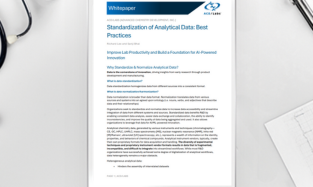The Good, the Bad, and the Donald: what Pharma can expect from 2017
Posted: 11 January 2017 | | No comments yet
From an orphan drug sales boom to uncharted political landscapes, the CPhI Worldwide expert panel predict pharma’s biggest opportunities and threats in 2017.


From an orphan drug sales boom to uncharted political landscapes, the CPhI Worldwide expert panel predict pharma’s biggest opportunities and threats in 2017.

Orphan drugs and neglected diseases
With the traditional blockbuster drug era widely considered to have passed, orphan drugs and neglected diseases are, in the short-term, likely to deliver pharma’s best revenue opportunities.


Over the medium term, developing world economies and cost reductions from new technologies and working practices like Quality by Design and continuous processing should help sustain profits.
Instrument companies
Significantly, continuous processing and Quality by Design will also lead a “paradigm shift at instrument companies” with new models – particularly in spectroscopy – specially created for process monitoring and control.


CPhI expert, Emil Ciurczak, President of Doramaxx Consulting, said, “The instrument companies will cooperate with software vendors to produce a more cohesive operating system that will allow multiple instruments to smoothly work in unison for PAT/Quality by Design applications. In many ways this will be similar to the unification of chromatography terms/specifications and the emergence of international standards for dissolution testing”.
Continuous manufacturing


Continuous manufacturing (CM), having seen several pharma companies adopt the technology in 2016, is envisaged to enter a new phase of implementation as CROs and CMOs adopt it as quickly as large Pharma companies.
Funding foundations
The reasons for this shift are the wider funding environment that is being created for orphan drugs, with foundations and smaller patent cohorts meaning development and production is quicker with CM.
The shorter turnaround time will also aid CMOs with the larger number of products from client companies. R&D and clinical trials are also being shifted to CROs as larger companies shed sites and personnel.
‘might give a short-term jump’
CPhI expert Girish Malhotra, President at EPCOT International, agreed that drugs for orphan and neglected diseases ‘might give a short-term jump’, however affordability will remain a concern for sustained revenue growth.


He warns, that unless new therapies are created for the global population at affordable prices there will be challenges, as developing ‘marginally better new drugs will not deliver sustained revenue increases’ in the long term. Instead, he forecasts that the two biggest opportunities for pharma and generic companies will come from the developing economies and process improvements.
‘marginally better new drugs will not deliver sustained revenue increases long term’
Efficient drug development
“Pharma has to drive innovation from inside and excel in creating efficient drug development, process and technology innovation in manufacturing and the supply chain. Simplified and innovative processes will produce quality products. Moving away from present practices of quality assurance after the fact can save significant monies,” added Malhotra.
Political influence


Gil Roth, President of the PBOA, states it’s too early to make definitive predictions about the effect Trump’s administration will have on the US healthcare and CDMO sectors, especially given his recent commitment to ‘bring-down drug prices’, which was post-election and contains no specific granularity as of yet.
However, with a preference for protectionist strategies, a change in tax status for overseas revenues could well trigger a spate of reinvestment in US facilities by big pharma as well as greater domestic M&A activity.
‘It’s all too vague at this point’
“Some of the President-Elect’s statements on immigration could become problematic if they keep high-value scientific personnel from coming to the US. His appointment for FDA Commissioner could shape policy there in ways that benefit or hinder pharma and CMOs. Congress’ path to repeal and replace the Affordable Care Act leads through a minefield. It’s all too vague at this point” concluded Roth.
Congress’ path to repeal and replace the Affordable Care Act leads through a minefield


“The overall pharma industry is in very good health as we enter 2017 and our experts highlight a number of good opportunities that should sustain growth in the near and medium term. Innovation in our industry is also reaching new levels and technologies that have been in their infancy in recent years look well set to permeate through the supply chain. Collaboration, supply chain control and partnering will remain essential to the sector’s health” concluded Chris Kilbee, Group Director Pharma at UBM EMEA.
Conclusion
The Good: Orphan drugs, developing world sales and continuous manufacturing to push on in 2017
The Bad: Affordability will remain a concern for sustained revenue growth
The Donald: The effect his administration will have on the world’s largest pharma economy and the wider implications for the global manufacturing industry is still unclear









